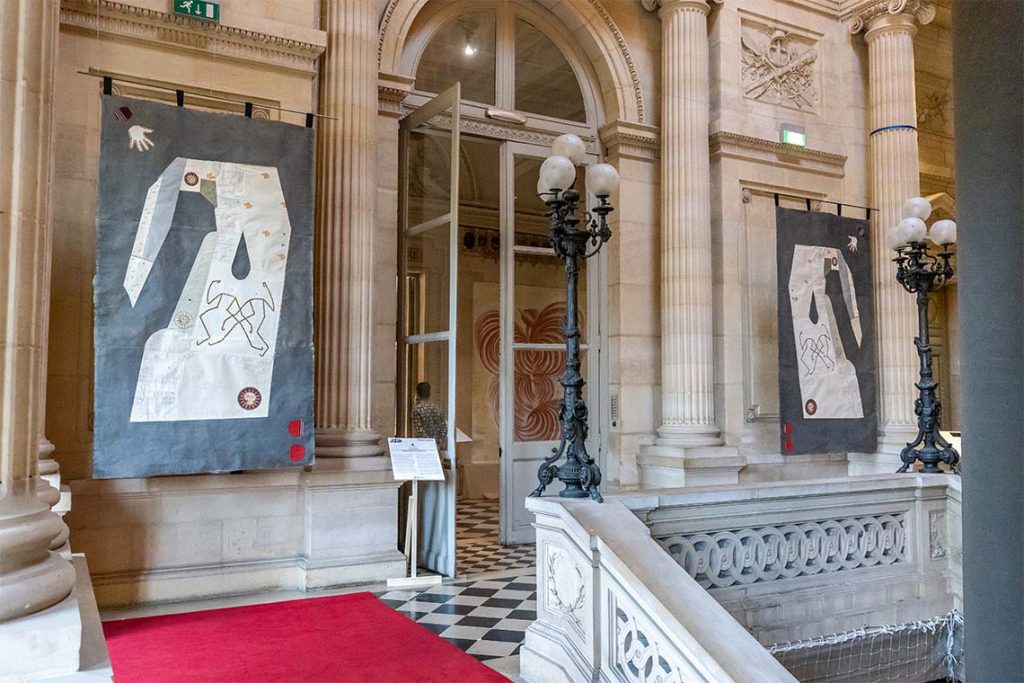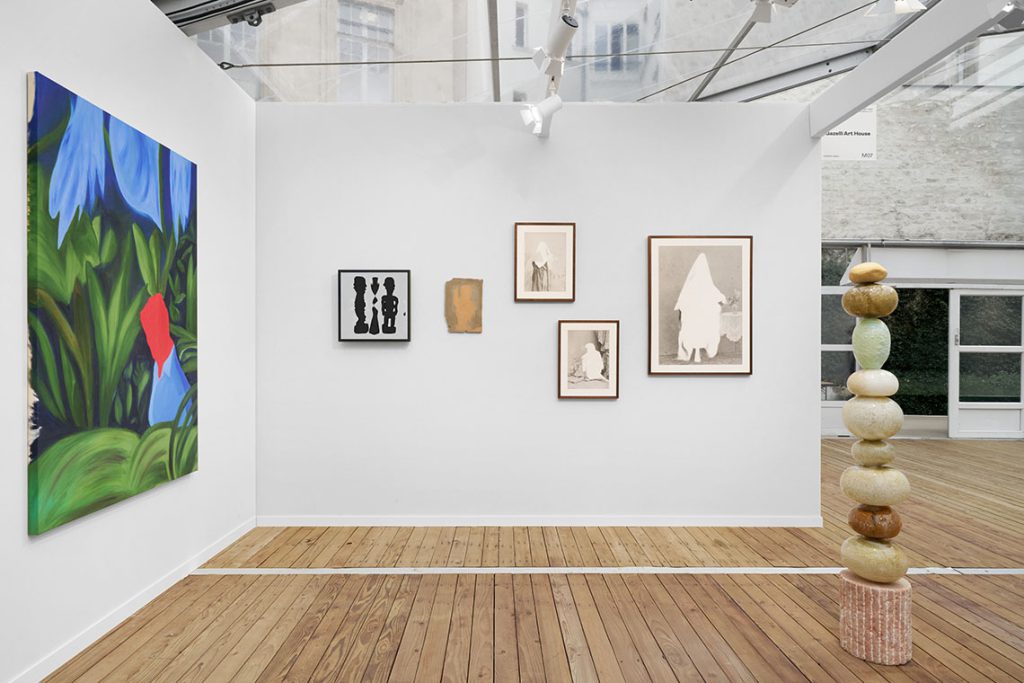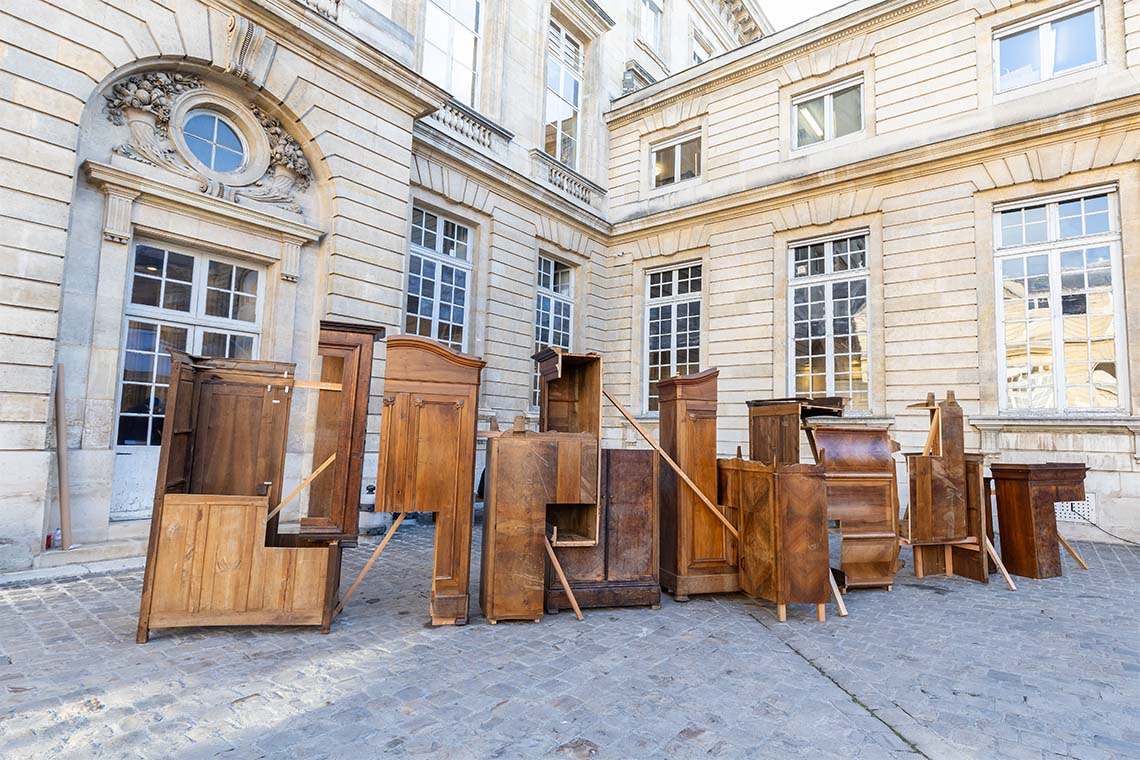Asia NOW 2025 sought to challenge ideas regarding the geographical scope of the continent, allowing the often-overlooked area of West Asia to shine through.
At a time when physical borders seem to be tightening, art and culture often serve as reminders of the artificiality of lines drawn in the sand. The 11th edition of Asia NOW, which took place recently at the Monnaie de Paris on the banks of the river Seine, appeared to confirm the porousness of such geographical and cultural demarcations, questioning the very idea of what constitutes ‘Asia’.
Western notions of the idea of Asia vary as widely as the geographical scope of the continent itself. But hardly anyone refers to those hailing from what is usually known as the Middle East as “Asian”. Historically, from the Western perspective Asia started on the eastern side of the Bosphorus, as much a cultural demarcation as a geographical one. Yet, according to this year’s edition of Asia NOW, the Middle East is an area which sits firmly in the geographical parameters of the Asian continent as ‘West Asia’ and deserves to be treated as such.
So it was that visitors were greeted upon entering the fair by a series of pillars encased in a purplish fabric printed with the pattern of palm tree bark. Created by Saudi artist Mohammad Alfaraj, it set the tone from the outset: whatever you may think of as belonging in an Asian art fair, think again. The objective of this edition of Asia NOW, as outlined in the fair’s press statement, was to “place West Asia at the heart of its programming, affirming a vision of plural and global ‘Asias’”. Under the theme Grow, the importance of this expanded vision was asserted through not only the presence of West Asian artists and galleries but also a series of performances, which included Ahaad Alamoudi’s Ghosts of Today and Tomorrow and Pascal Hachem’s Threaded Whole.

Arab artists were difficult to miss, with three of the region’s current art world fixtures both present and prominent. Just beyond Alfaraj’s palm tree pillars, a video installation by Sara Brahim framed the red velvet carpeted main staircase leading up to one of the fair’s floors. Brahim’s work, I like never, I also like never (2024), curated by Arnaud Morand, sees two bodies levitating, appearing larger than life, the shadows cast on the screens by passersby contributing to the strangely graceful if slightly eerie suspended motion of the dancers on screen.
Just a little further up, right over the central staircase, was Muhannad Shono’s Topographies of Belonging, Homeskins I to VI (2025), also curated by Morand, a series of furling black columns of paper, taking up most of the overhead space. Opposite, a diptych of tapestries by Iranian artist Laila Tara H of Hatch Gallery echoed Brahim’s two-screen presentation below, offsetting the heavy darkness of Shono’s sculptural paper pillars. Entitled Loqmé (2025), the sheets of fabric made from a single kaftan divided in two, accompanied by a sound piece, revealed layers of both personal and collective history. Delicate stitching, letters, pieces of paper taken from pre-revolutionary debt ledgers, accompanied by miniature figurative paintings, drew visitors further in, eliciting a desire to inspect every detail of the site-specific installation for what fragmented secrets it might reveal.
Artists from West Asia were also revealed throughout the fair in gallery presentations. Sabrina Amrani relied on bigger names like Manal AlDowayan, :mentalKLINIK and Timo Nasseri to guide the region’s representation. AlDowayan’s work featured some more recent minimalist outlines of palm tree outlines on paper, echoing Alfaraj’s palm trees, as well as a pleasant surprise in the form of an older, more personal work entitled The Cheerleaders (2015). On a parchment with a monochromatic print and copper with an archival photograph overlain, AlDowayan searches through her father’s fading memories, in the hopes of piecing together what might be lost.

The quest to restore lost connections reappeared in Nouf Aljowaysir’s Ancestral Seeds series (2025), presented by Gazelli Art House. By erasing parts of archival photographs taken from the 1800s to 1900s, it questions the inherited memory of colonial era photography and its reductive depictions of Middle Eastern identity. Further connections between memory and land were made in Doha’s Al Markhiya Gallery’s display, where an unusual piece by Hind Al Saad of “computational art”, as she terms it, spoke of Earth’s role as witness. A line in Arabic running across a digital screen in a box made from concrete, which appeared almost like crumbling mud, rang almost as a warning: “The sand and stones in the wall remember”.
This connection was further echoed by the nearby Katara Art Centre, in a collaboration with Wusum Gallery to showcase the practices of Noora Al Hardan and Hamad AlFayhani. The atmospheric photographs by AlFayhani of Qatar’s landscapes evoked the slightly hazy way in which memories of place can be recalled, almost as if the artist were struggling to record and immortalise the place being photographed before it was forgotten. Al Hardan’s spaces took on a distinctly more architectural form in a series of colourful renditions of local buildings in Qatar, executed as simple lines marking out memories of culturally significant spaces, ones that it appears the artist has a personal stake in preserving.
Throughout, Asia NOW 2025 became a space to not only engage with art, but to reassess certain preconceived notions of what constitutes Asia. The expansion to include West Asia marked an interesting new direction for the fair, although it remains to be seen whether or not this expansion will move beyond primarily exhibiting artists from the Gulf, who were afforded a disproportionate amount of space as representatives of “West Asia”, or the “Middle East”. If Asia NOW is ready to truly embrace all facets of the region in its full complexity and cultural depth in a fair dedicated to Asian art, then carving out another space for Arab artists in the Parisian art circuit could help new audiences engage with the region. Whether it will move in this direction, or content itself with accessing the region through certain palatable themes and household names such as AlDowayan, Shono, Brahim or Alfaraj, remains to be seen.



